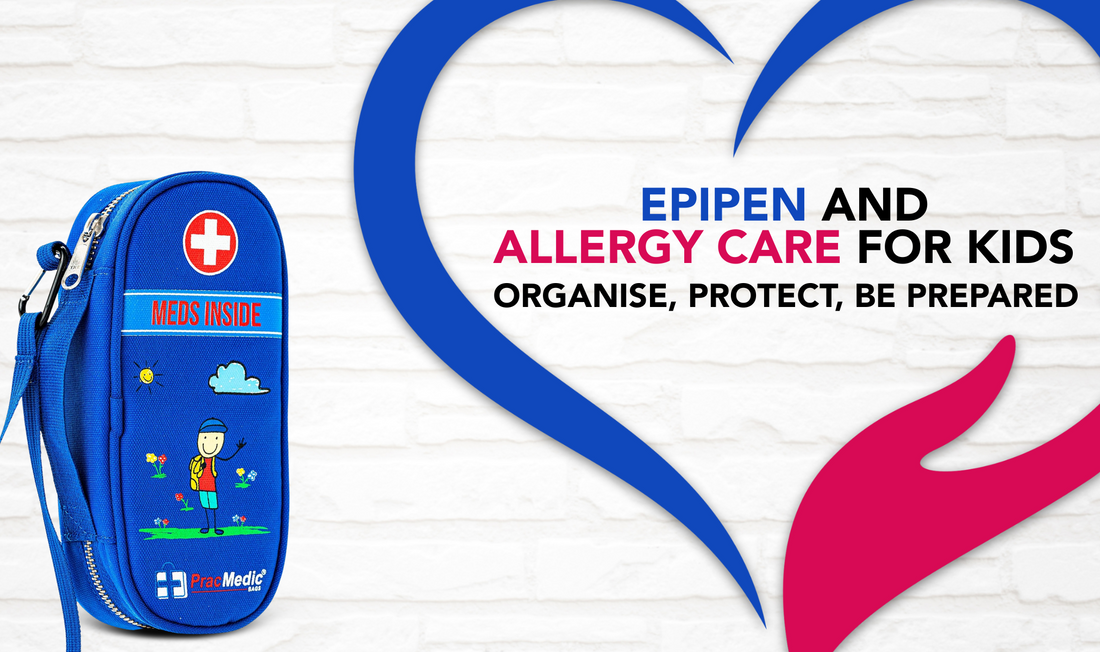
EpiPen and Allergy Care for Kids: Organise, Protect, Be Prepared
Share
Parents of children with severe allergies know the importance of being ready at all times. Allergic reactions can strike unexpectedly, whether at school, on the playground, or during family outings. Having a reliable, well-organised EpiPen and allergy care system in place is not just a precaution—it’s a necessity. In this guide, we explore how to effectively manage allergy care for kids, especially focusing on how the right EpiPen case can make a life-saving difference.
Why Allergy Preparedness Matters for Kids
Children with allergies are vulnerable to many environmental and food-based triggers. Common allergens like peanuts, shellfish, pollen, or insect stings can lead to anaphylactic shock—a potentially life-threatening condition. In such emergencies, immediate access to an EpiPen can mean the difference between life and death.
Allergy care for kids goes beyond just owning an EpiPen. It involves proper storage, accessibility, education, and routine preparedness. This means selecting the right epipen case for child use, teaching them how to recognise symptoms, and ensuring their caregivers and teachers are equally informed.
Choosing the Right EpiPen Case for School and Beyond
- Protection - It should insulate the medication from heat, cold, and moisture.
- Organisation - It must include compartments for other allergy medications
- Identification - Contains a medical ID for displaying essential information like user’s name, allergies, emergency contact plus how to use Epipen instructions.
- Accessibility - The design should allow even a child or teacher to quickly open it and retrieve the pen.
- Portability - It should fit into a backpack, lunchbox, or belt with ease.
Essential Items for a Children’s Allergy Bag
Besides the EpiPen, a well-prepared children’s allergy bag should include:
- Antihistamines (chewable or liquid)
- Emergency contact card
- A copy of allergy action plan
- Inhaler (if your child has asthma)
- Wet wipes and tissues
- Snacks (if medically allowed)
- Medical ID bracelet or tag
This allergy kit can be organised in a dedicated allergy medicine organiser for kids or packed in a sturdy, insulated case.
Allergy Management Tips for Parents
- Train Your Child - Even young kids should know what their symptoms feel like and how to alert someone.
- Inform Others - Teachers, caregivers, school nurses, and babysitters should know how to use an EpiPen.
- Create a Routine - Check the expiration date on the EpiPen regularly. Keep it in the same location to build a habit.
- Use Labels - Label all medications and their purposes.
-
Prepare a Backup Bag - Keep one epipen storage for kids at home and one at school.
Protecting EpiPens
A quality insulated epipen case helps cushion the medication from temperature extremes during summer outings, school trips, or while in a car.
Also, remind children not to toss their bags, leave them in the sun, or store them near radiators or vents.
School Preparedness and Communication
Schools need a clear allergy protocol, which means having an allergy action plan on file. In addition, they may need to practise emergency drills for allergy scenarios and notify all school staff of students with severe allergies.
Travel Tips for Allergy-Prone Kids
When travelling, keep the EpiPen in your carry-on luggage or purse, never in checked baggage. Use an epipen travel case designed for air travel and long road trips.
Also, carry extra medication in case of delays. Notify airlines or restaurants of your child’s allergies beforehand.
Building Confidence and Routine
Children with allergies shouldn’t feel anxious or left out. A reliable allergy system boosts confidence and allows them to enjoy everyday life. A properly organised and labelled epipen case for kids empowers them to take responsibility as they grow older.
